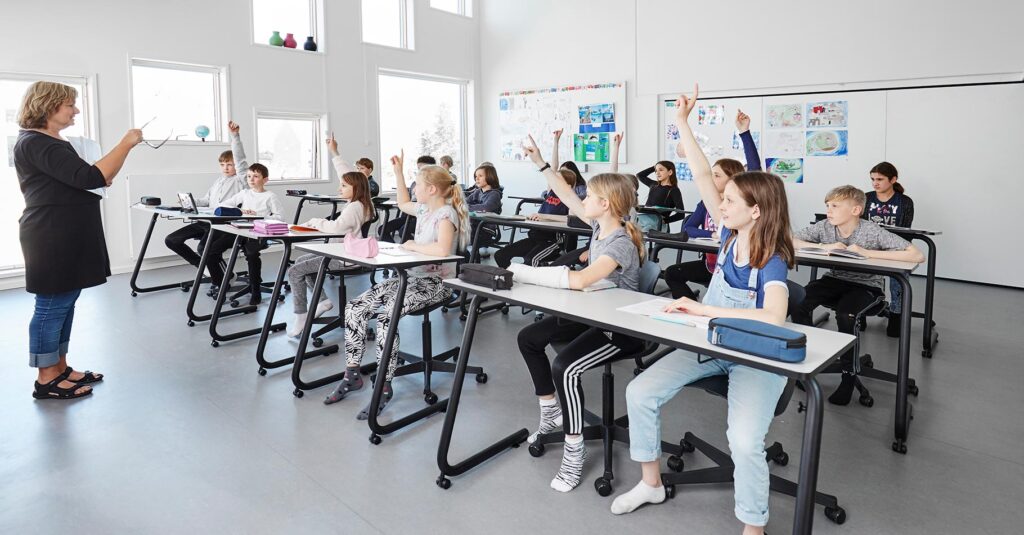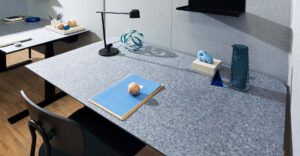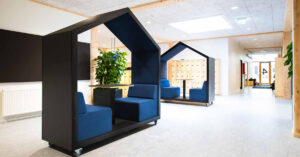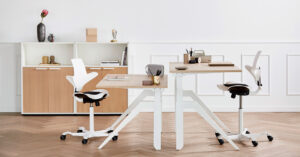Nearly 10% of schoolchildren are talented or gifted, and the best way to help them learn and develop their potential may be to organise both the teaching and the classroom differently. Rikke Christensen, consultant with Clever Consulting, shares with us her best tips.
“Gifted children are extremely ‘intelligent’ pupils with an IQ of over 125, while talented children score nearly as high in intelligence – overall, they make up around 10 per cent of schoolchildren. If we can spot these children in time, we can make a world of difference when it comes to developing their potential and not least helping them to thrive at school, so they don’t feel out of place or excluded,” explains Rikke Christensen.
She owns the consulting firm Clever Consulting which advises primary and lower secondary schools on how to create the best conditions for gifted children – in relation to organising both the teaching and the physical surroundings. She worked as a school teacher, consultant, and principal for 16 years before embarking on further studies in project management and process optimisation and starting Clever Consulting in 2016.
Look for these characteristics
If you want to learn to spot talented and gifted children in the classroom, you should look for these characteristics, according to Rikke Christensen.
- Excellent memory, requiring very few repetitions for retention.
- Large vocabulary and ability to understand many concepts.
- Clever, offbeat children who, at times, can seem wise beyond their years.
- Sensitivity to sounds, light, emotions and physical touch.
- Perfectionism, with extremely high expectations of their own performance.
- Socially challenged and possibly loners in the class.
“When these children thrive and are challenged, these characteristics become a fantastic resource in the class – these pupils are fun and inventive, they can improve the performance of the class as a whole and they often help hold the class together. However, if their special needs aren’t supported, these children may feel lonely, are self-critical, have a tendency to be fussy and persist in discussions,” explains Rikke Christensen.
Supporting these children
In addition to providing leadership consulting, competence boost of teachers, and the special programme ‘High Performance’ for talented and gifted children, Rikke Christensen advises schools on how the physical surroundings can support the special needs of these children.
“These children are more receptive to sensory stimuli than others and can have difficulty processing them in ordinary surroundings. It is therefore important to organise the surroundings in a way that allows the children to step away without seeming strange or actually withdrawing from the social community entirely. I’ve experienced children who would lie down under the table to be left alone, and this is conspicuous in an ordinary class,” says Rikke Christensen.
5 recommendations for furnishings
She therefore offers these recommendations for furnishings to support talented and gifted children:
01
Create a screened off area in a corner of the classroom, for instance with a sofa or beanbag chairs – a place a child can go to when they need a break. Away from the others, but still in the classroom.
02
Consider creating cosy areas with upholstered surfaces, a little privacy and the possibility to create your own learning space without being interrupted by others.
03
Many gifted children are full of energy, so think about chairs and sitting postures that allow the child to tilt their legs or rock back and forth.
04
Think in terms of learning environments that create spaces for reflection and screens to block visual noise – for example a desk with a movable screen, high-backed sofas or little enclosed seats.
05
Focus on good acoustics in the room so sounds and noises are muffled and the children are disturbed as little as possible.








